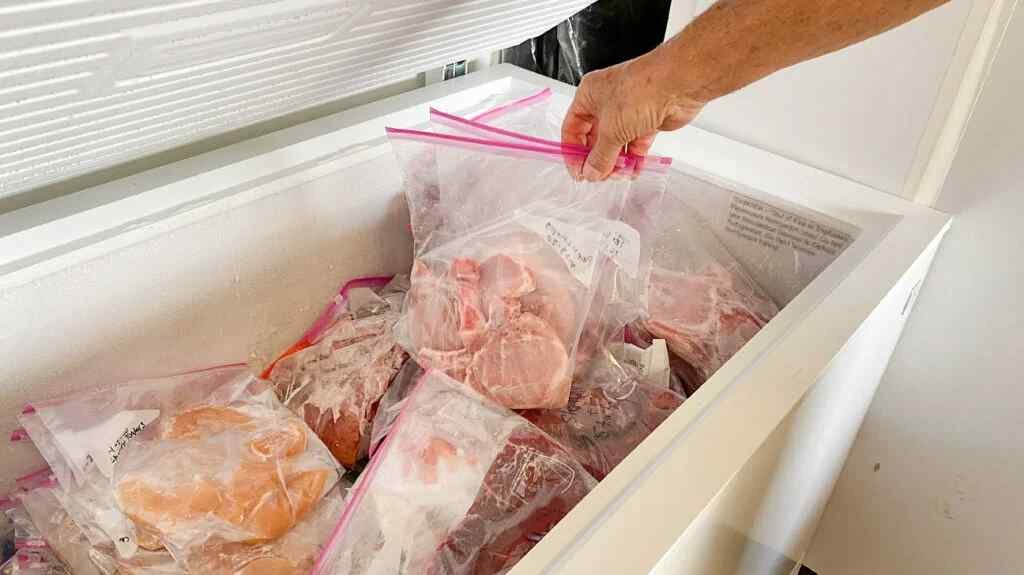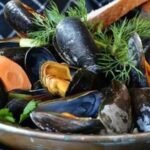Facing the dilemma of cooking frozen meat and fearing a tough outcome is a common kitchen conundrum. With a blend of science and culinary art, we’ll guide you through the myths and truths of preparing frozen meat, ensuring tenderness and flavor.
Let’s arm you with knowledge and tips for transforming that icy block into a succulent meal.
Cooking frozen meat doesn’t necessarily make it tough, but it can alter its texture and quality. When meat freezes, the juices can rupture the fibers, potentially leading to a tougher texture. Freezing and thawing can also affect the moisture content of the meat. However, it’s possible to cook frozen meat properly, resulting in juicy and tender dishes, if done correctly. The key is to adjust cooking times appropriately and ensure the meat reaches a safe internal temperature.
The Science Behind Cooking Frozen Meat

To grasp the science of cooking frozen meat, understanding the impact of the freezing process on meat’s cell structure and water content is essential.
During freezing, the water within the meat turns into ice, causing these crystals to expand and break cell membranes, which can result in moisture loss once thawed. This is a key factor in why meat that has been frozen and then cooked might seem tougher if not managed correctly.
Yet, cooking it directly from its frozen state can help maintain moisture by limiting the duration water remains in its damaging crystalline state. A quick change from ice to steam within the meat fibers, under intense heat, can help keep the meat tender.
This approach also preserves nutrients better, as exposing meat to air and varying temperatures while thawing can speed up oxidation and decrease its quality.
Can You Cook All Types of Meat from Frozen?

| Meat Type | Effect on Texture When Cooked From Frozen | Recommended Cooking Methods | Additional Notes |
|---|---|---|---|
| Beef | Can be tougher if not cooked properly | Slow cooking, braising, stewing | Cooking beef from frozen is generally fine for cuts used in slow cooking. Thinner cuts like steaks should ideally be thawed to avoid uneven cooking. |
| Chicken | Risk of dryness and toughness | Baking, roasting, slow cooking | It’s crucial to use a thermometer to avoid overcooking. Cooking time may need to be increased by 50%. Wings and thighs are more forgiving than breast. |
| Pork | May become tough if overcooked | Slow cooking, roasting, grilling | Thicker cuts like pork shoulder adapt well to cooking from frozen, especially in slow-cooked dishes. Chops and tenderloin are better thawed first. |
| Turkey | Higher risk of dryness | Roasting, braising | Whole turkeys are challenging to cook evenly from frozen and require a longer cooking time. Smaller cuts or ground turkey can be cooked from frozen with care. |
| Fish | Can result in a dry texture | Baking, poaching | Lean fish fares better when cooked from frozen to prevent drying out. Fatty fish like salmon can become tough around the edges if not cooked carefully. |
| Lamb | Can be tougher, especially for lean cuts | Slow cooking, roasting | Lamb requires careful monitoring when cooked from frozen to prevent toughness, especially for cuts like chops. Slow-cooked dishes like stews are more forgiving. |
Most meats can be cooked straight from the freezer, but the approach and time needed will differ based on the meat’s cut and type.
- Thickness: Slimmer cuts such as steaks or pork chops tend to cook more uniformly from frozen, while bulkier cuts mightn’t cook as evenly, resulting in parts being overcooked.
- Type: Chicken and minced meats are especially good for cooking from frozen to ensure they’re cooked thoroughly and avoid any foodborne diseases.
- Technique Modification: For tougher, bigger cuts that are frozen, methods like slow cooking and braising are recommended, as they allow for the meat to thaw gradually and become more tender.
- Safety Precautions: It’s critical to always use a meat thermometer to check that the meat has reached a safe internal temperature, given that cooking durations may extend when starting from frozen.
Grasping these details will help you cook frozen meat effectively, without sacrificing its texture or taste.
Tips for Cooking Frozen Meat Without Making It Tough

Cooking frozen meat and avoiding a tough texture involves careful attention to your cooking method and temperature control.
Opt for gentle, gradual cooking methods like braising or stewing, which slowly raise the meat’s internal temperature. This method prevents the muscle fibers from contracting too quickly.
Using a meat thermometer can help ensure you cook the meat perfectly without overdoing it. If possible, partially thawing your meat before cooking can reduce cooking time and help achieve a more even cook.
Incorporating a marinade or cooking liquid can add flavor and assist in keeping the meat tender throughout the cooking process.
Do You Need to Adjust Seasonings When Cooking Frozen Meat?

After mastering how to keep frozen meat from becoming tough, it’s necessary to think about whether you need to tweak your flavor additions for the best taste. When cooking frozen meat, the approach to adding flavors does indeed require careful consideration.
- Frozen meat takes longer to soak up flavors, so you might need to allow more time or use a bit more of your flavorings to get the taste just right.
- Moisture on the surface can weaken flavors, resulting in a less intense taste than you might want. Drying the meat before adding any flavorings can help avoid this.
- The strength of herbs and spices can vary; it’s best to add fresh herbs closer to the end of cooking to keep their bright tastes, while dried spices can be added earlier.
- Adjusting flavors before serving is key; always make sure to taste and tweak the flavor of your dish right before it’s ready to ensure everything is perfectly balanced.
Paying attention to these details will help make sure your dishes made with frozen meat are both tender and full of flavor.
Advantages of Cooking Meat from Frozen

Cooking meat directly from its frozen state offers several benefits that are often overlooked. This approach not only streamlines the cooking process by eliminating the need for thawing but also mitigates the risk of bacterial growth, which can occur if thawing isn’t handled correctly.
When you cook meat while it’s still frozen, you help preserve nutrients that could be lost when meat is thawed. This method is incredibly convenient for those who plan meals in advance, removing the need to remember to take the meat out of the freezer well before mealtime.
Studies indicate that certain cooking techniques, such as using a slow cooker or an instant pot, can produce results that are both tender and full of flavor, even with meat that hasn’t been thawed.
Additionally, this practice can lead to a reduction in food waste, as it decreases the chances of having to throw away meat due to improper thawing or forgetting it in the fridge.
Is It Safe To Cook Frozen Meat Without Thawing

Cooking frozen meat without first thawing it’s typically safe, but it requires careful attention to specific cooking methods and temperatures. When starting with frozen meat, it’s vital to:
- Increase cooking times since frozen meat often takes 50% longer to cook than its thawed counterpart.
- Use a meat thermometer to check that the internal temperature has reached a safe level, which should be 165°F (74°C) for poultry and 145°F (63°C) for most other types of meat.
- Steer clear of certain cooking techniques, such as slow cooking, as it might keep the meat at unsafe temperatures for too long.
- Recognize that some meats don’t fare well when cooked from frozen; thinner cuts tend to be more appropriate than thick roasts or steaks.
Adhering to these guidelines can ensure both safety and quality when cooking meat from frozen.



